Our pick of the best pannier bags and racks for travelling light and loading up
The best pannier bags and racks transport what you need for commuting, or for longer touring trips, in a safe and secure fashion.
On short rides, the best cycling backpacks are fine for short rides, but on longer commutes even the most breathable bags will make your back sweaty.
This is the last thing you want when cycling to work without the possibility of showering in your office.
When heavily laden, your arms, neck and shoulders will feel the strain too.
All pannier bags are held by hooks on a pannier rack, which usually screws into eyelets on your bike frame’s seatstays or dropouts.
The most common kind are rear panniers, sitting either side of the back wheel. One or two of these pannier bags usually suffice for commuting or lightweight touring.
If you need additional capacity, it’s a good idea to spread out heavy loads. A front rack gives the option to add one or two bags beside the front wheel.
Front and/or rear racks often come as standard on many of the best touring bikes and are designed specifically for the job of carrying luggage. If a touring bike doesn’t come with a rack pre-installed, in all likelihood it’ll have the required eyelets on the frame to add one.
On that note, many gravel bikes, endurance road bikes and some mountain bikes also have fork eyelets to attach a front rack.
Here are our top choices, as reviewed by expert BikeRadar testers, as well as a buyer’s guide to help you choose the best pannier bags and racks for your bike.
Six of the best pannier bags in 2024
Here are six of the best pannier bags, as rated and reviewed by BikeRadar’s expert testers. Carry on reading for our full bike pannier bags and racks buyer’s guide.
Altura Heritage 16L Pannier
- £55 as tested
- 16-litre capacity (pair)
- 778g per bag
- Pros: Sturdy; stylish
- Cons: Not the best in the wet
The Altura Heritage 16L Pannier is a robust, practical bag suitable for all but the worst conditions.
This vintage-looking pannier uses tough 12oz waxed cotton canvas that you can reproof for the outer and a light ripstop nylon liner, plus Rixen-Kaul’s simple Vario fittings.
Measuring 40x31x15cm, the 16L pannier bag has enough room for commuting clothes but not shoes.
The flap-over lid closure with buckle and the drawcord on the main pocket keep most of the weather at bay. But Altura recommends you use a drybag for electrical items.
There’s a large outer lid pocket, subtle reflective details and light loops, plus a shoulder strap. A stiffened back helps the bag stay stable.
The push-through rail clip works best on up to 12mm-diameter rails.
Two hooks add security, but you need a Philips screwdriver to adjust them. The main pocket (in a light colour to help you find items) has a large laptop sleeve.
Arkel Signature V

- £115.15 as tested
- 28l capacity
- 1.92kg
- Pros: solid ride performance; off-bike styling
- Cons: Quite heavy
This roomy, tote bag-shaped pannier has a line-up of practical features that includes: a padded laptop sleeve, an internal zipped pocket, totes-tyle carry handles, a padded shoulder strap, an exterior side pocket and reflective trim.
Made in Canada and signed by the maker, the bag has taped seams and a waterproof lining.
The Cam-Lock system simply engages between the mounting hooks and rack tubing to secure the pannier.
The self-locking rack attachment fits rack tubing of up to 15mm, with an oversize Cam-Lock available up to 21mm. This bag held firm on the bike during resting, no matter what it was loaded with and the roll-top fastening helped hold the contents securely in place.
Top handles allow you to easily load and carry the bag off the bike. Adding great off-bike comfort, a padded flap covers the fixings when you want to carry it by the padded shoulder strap.
Oxford Aqua V 20 QR Pannier

- £44.99 as tested
- 20l
- 815g
- Pros: Competitive price; very visible; beneficial features
- Cons: Some adjustment requires a tool
The Oxford Aqua V 20 QR Pannier is great value, easy to use and visible around town.
Thanks to its 20-litre capacity, this eye-catching (815g, 42cm x 32cm at widest x 17cm) roll-top pack fits commuting essentials.
You can safely stow your valuables in the external waterproof pocket.
Oxford deploys a stiffened back and chunky, hard plastic bumper at the base to keep the pannier bag stable when fully loaded. These also protect the tough 500D PVC fabric with welded seams.
The attachment system works very well, with a pull handle that opens the clip’s jaws and is compatible with all sizes of rail.
Width adjustment on the clips and the stabilising hook requires a 3mm hex key, which isn’t ideal if you’re switching the bag between bikes.
Masses of reflective details and the easy on-off clip system make the Aqua V 20 QR Pannier a great commuting option. The substantial carry handles work well for shopping trips and it’s a bargain price.
Tailfin Alloy Rack, Ultra-Durable Pannier Bags and AP20 Top Trunk Bag
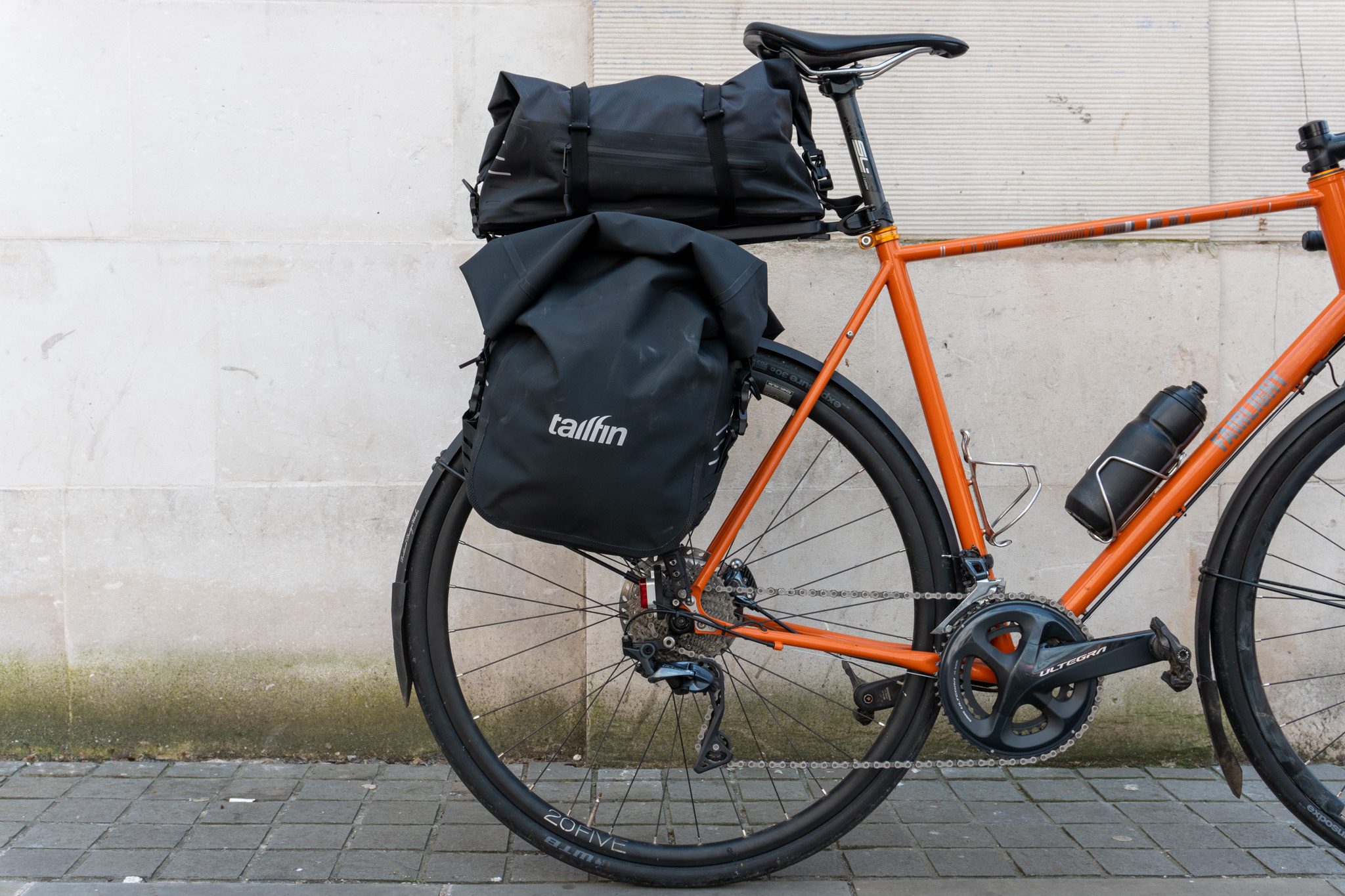
- £590 / $770 / €750 / AU$1,100 as tested
- 22l
- 820g (pannier)
- Pros: High capacity; practical; broad compatibility
- Cons: Expensive
The Tailfin Alloy Rack, Ultra-Durable Pannier Bags and AP20 Top Trunk Bag will fit on to almost every bike provided it has either rack mounts, thru-axles or QR axles.
Fast-release dropouts make the Alloy Rack far easier to instal and remove from the bike than a traditional, bolt-on rack.
The Alloy Rack’s stability and secure attachments to the bags stops them from swinging, like bikepacking bags are prone to.
The Ultra-Durable Panniers Bags are made from hardy, waterproof material with reflective detailing. They swallow all you’ll need for a week at work, including a large laptop, or on tour.
Perfectly sized for an overnight audax or a long day-ride, the AP20 Top Trunk Bag (made from the same material as the panniers) sits solidly inline with your saddle.
Two side zips give access to the main compartment or separate tool pocket without the need to undo all the straps.
Topeak Pannier Drybag

- £94.99 as tested
- 24l
- 785g
- Pros: Broadly compatible; high capacity; waterproof
- Cons: Pricey; no valuables pocket
The Topeak Pannier Drybag is a large pannier bag that’s brilliant for commuting, touring and errand running.
It’s also easy to swap between bikes if you own more than one or share panniers with someone else.
At a generous 47×31.5x15cm, this pannier bag can hold a full change of clothes, shoes plus a laptop and notebook.
It’s also waterproof thanks to being fully welded with a Velcro-secured roll top (but not overly heavy, at 785g).
The Handle Loc handle, when squeezed, opens the rack rail clamps (which fit 8/10/12/16mm rails) and clamps down on release.
The stabilising hook also has a quick-release button and can be rotated 180 degrees. This meant our tester could fit the bag on all the bikes he tried it on without using a tool.
Clever details include reflective panels front and rear, quick clips for closure, a hard back to keep the bag stable and a very good shoulder strap.
It is pricey, though, with a cavernous black interior and no small valuables pockets.
Ortlieb Back-Roller pannier bag
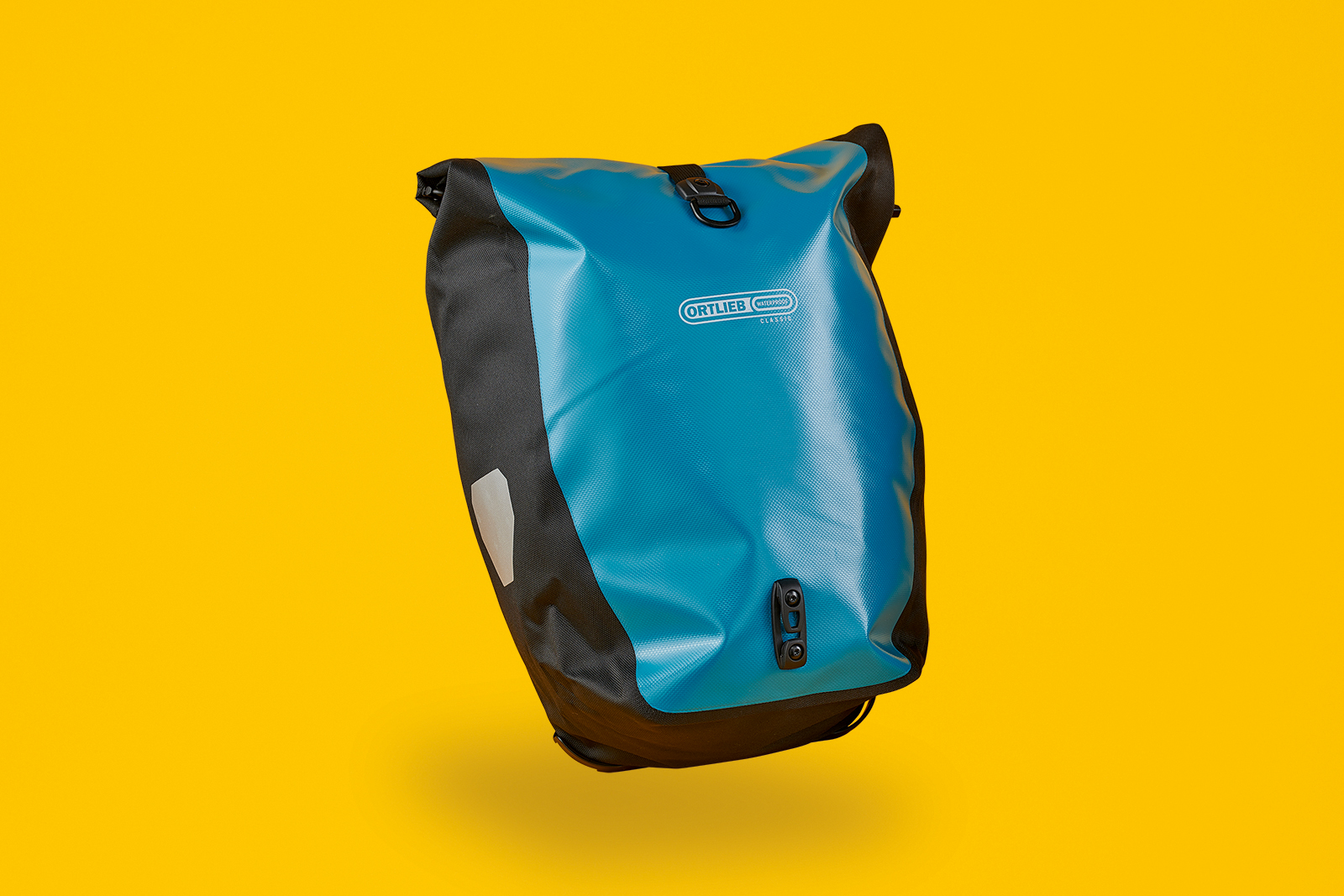
- £130 / $190 / €130 as tested
- 20l capacity (single)
- 950g per bag
- Pros: Waterproof; practical
- Cons: Expensive
The Ortlieb Back-Roller pannier bag is waterproof thanks to its polyester construction and roll-top closure.
Ortlieb’s QuickLock 2.1 attachment system is intuitive and keeps the Back-Roller pannier bag firmly on the rack.
The bag can hold a maximum of 9.5kg. Inside, there’s a laptop sleeve and mesh pocket with a zip to stow smaller things.
Also consider…
The following products scored less than 4 out of 5 stars in our testing but are still worth considering.
Ortlieb Trunk-Bag RC
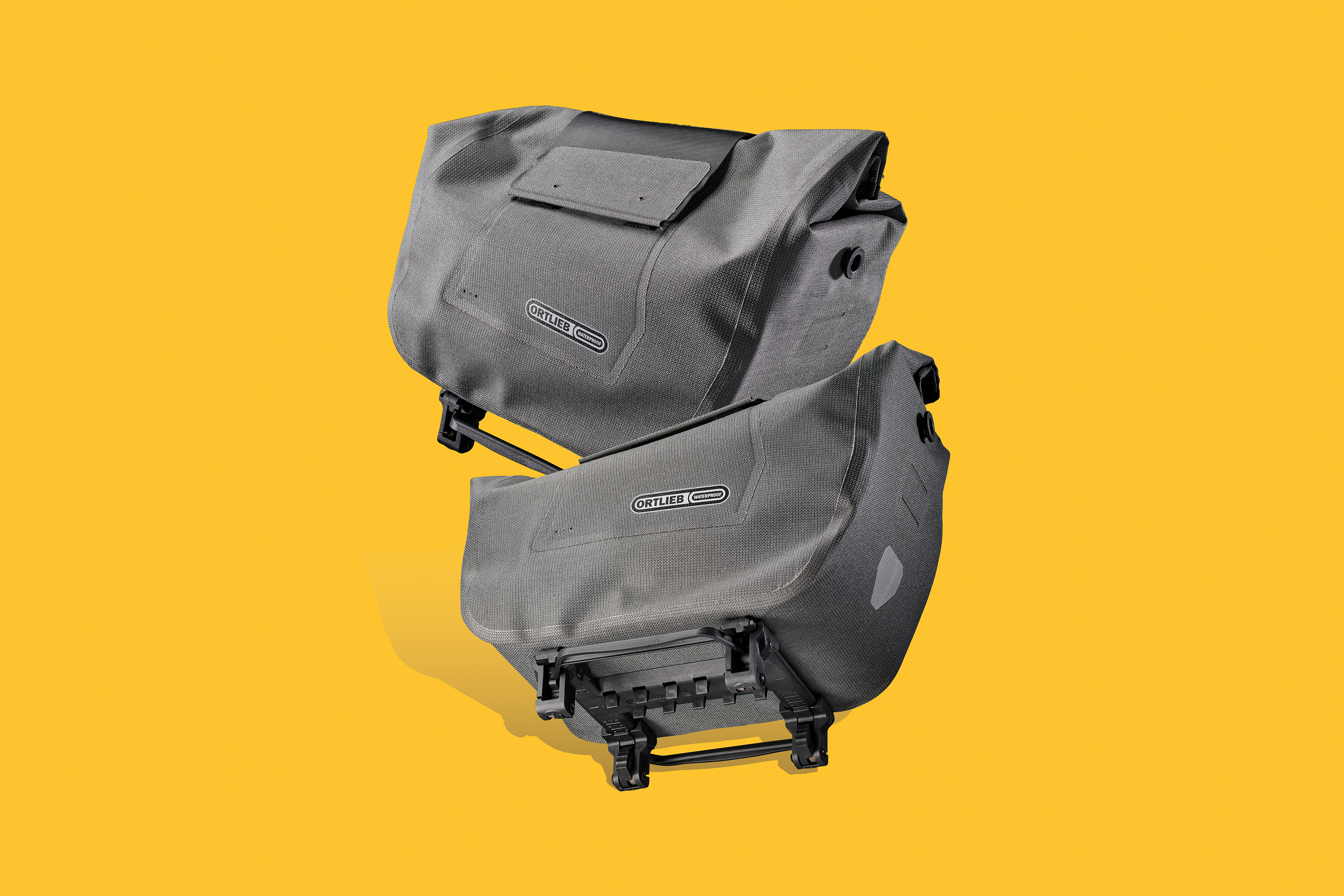
- £115 as tested
- 12l capacity
- 880g
- Pros: Easy to fit; good capacity
- Cons: Less versatile off the bike
Designed to fit on top of a rear rack, the Ortlieb Trunk-Bag is waterproof with a roll-top fastening, internal zip pocket and key hook, plus shoulder strap. It features reflective logos on each side and a loop for attaching a light.
The integral frame will fit racks from 80-160mm wide, with a tube diameter of 8-16mm. Don’t be fooled by the compact size though – the 12l capacity swallows up more than you think and will take up to 10kg in weight.
The wedge shape of this bag makes it more elegant on the bike than off it a and a more padded shoulder strap would also increase comfort.
Vaude Aqua Back pannier bag
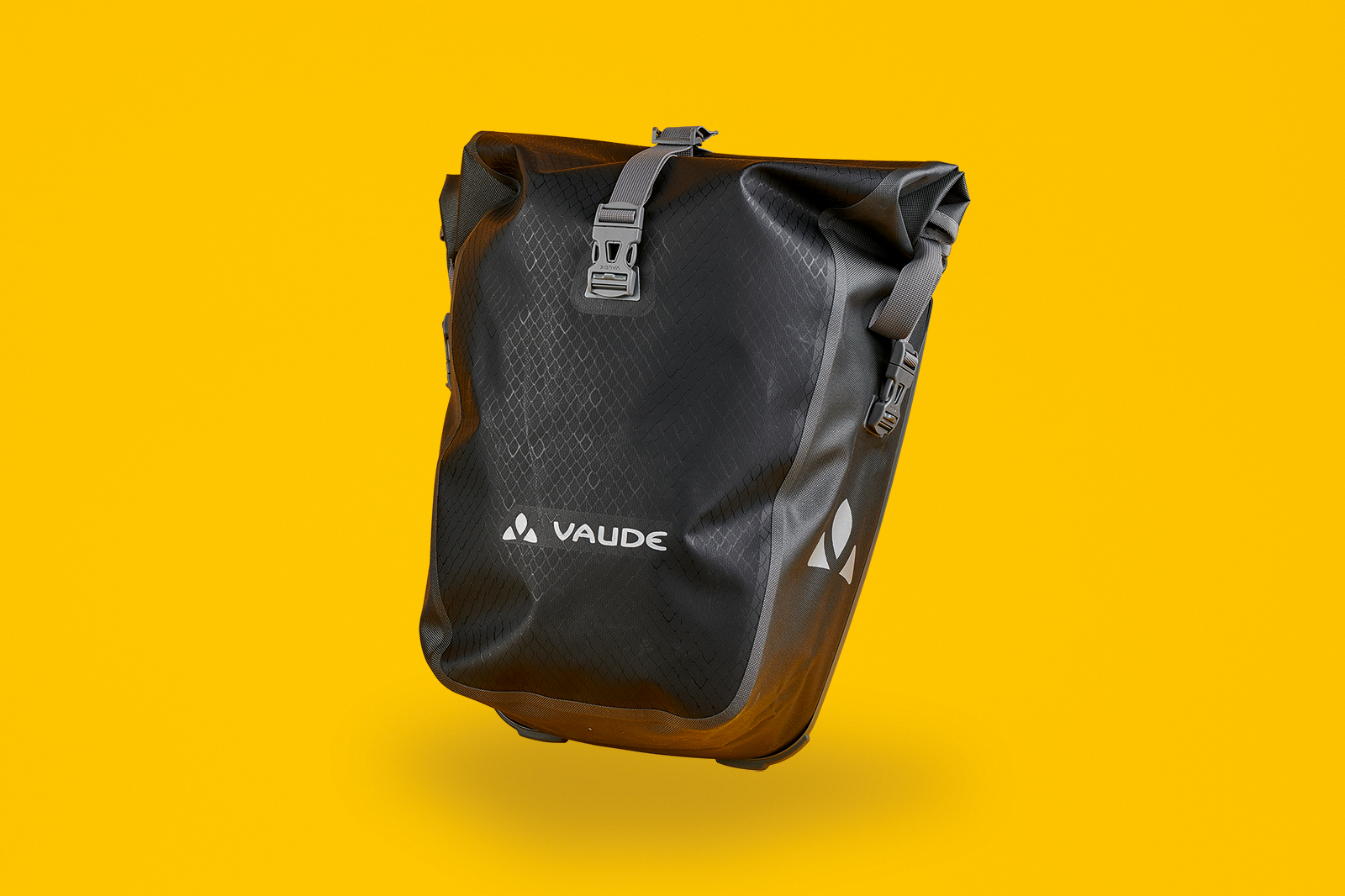
- £120 / €135 as tested
- 24l capacity (single)
- 970g per bag
- Pros: Roomy; all-weather protection
- Cons: Adjustment dials came loose
The Vaude Aqua Back pannier bag’s tarpaulin material and welded seams repel heavy showers and spray.
Capacity is good, as is Vaude’s mounting system – you thread a bike lock through it to lock the pannier bag to your bike.
The inside of the Vaude Aqua Back pannier bag has a laptop sleeve and mesh pocket for small valuables.
However, adjustment dials on the pannier bag’s hooks loosened in testing.
Pannier bags and racks buyer’s guide
What to look for in a bicycle pannier bag
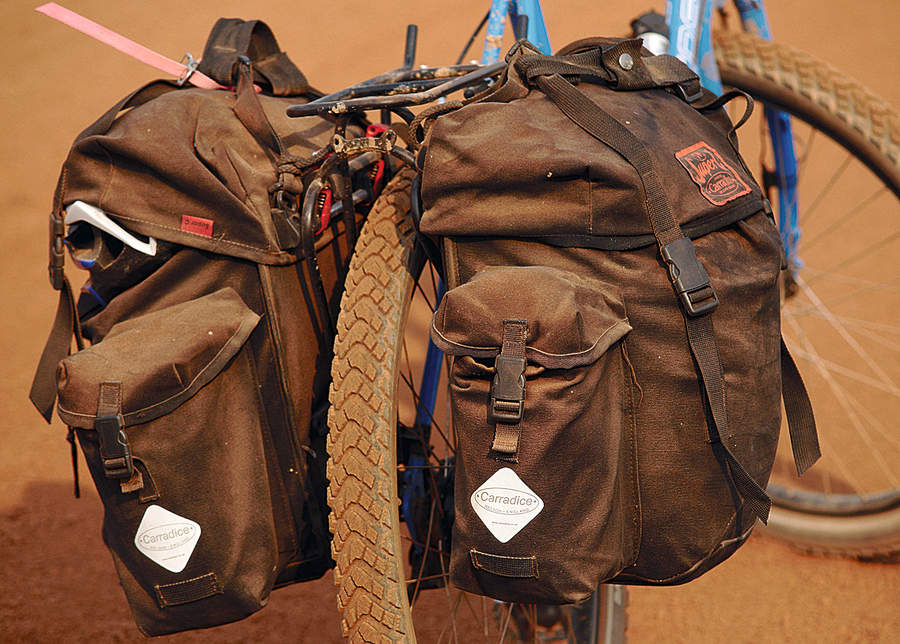
Look for tough, waterproof but lightweight fabric panniers with a secure fastening mechanism, roll-top or flap-down cover. A zip or draw-string to keep valuables safe inside is a bonus.
Size-wise, a five-litre pannier bag won’t hold much more than inner tubes, a bike pump, a multi-tool, snacks and a light extra layer.
Commuter pannier bags typically have between 10 and 15 litres of capacity for a change of clothes and laptop, for example.
Touring and bikepacking panniers step up in capacity to 20 litres or more per bag to hold numerous changes of clothes, shoes, and camping and cooking equipment.
The best pannier bags are easy to take on and off the pannier rack, but stay firmly in place when you’re moving.
Pannier bags for commuting can have shoulder straps so you can wear them off the bike as a backpack.
Some panniers feature fluorescent materials or reflective strips and somewhere to attach bike lights to boost your visibility.
What to look for in a pannier rack

The best pannier racks tend to be made of stainless steel or aluminium in order to provide strength and weather-resistance. Titanium pannier racks, such as the Tubus Airy rack, save a couple of hundred grams in weight, but add cost.
Light touring or commuter pannier racks will have a maximum capacity of 20kg. Carrying capacity rises to 35kg on racks designed for the weekly shop or expeditions. These kind of racks often have platforms for strapping an extra bag on top.
High-quality models will connect to your bike with stainless steel fitting bolts and have adjustable rack arms.
An integrated rear-light mount will often be included on the best pannier racks.
Side rails that slide inwards centralise the bag's weight, which is useful when carrying a large object in a single pannier.
Can pannier bags be attached to any bike?

Unlike saddle bags, which can be strapped to almost any saddle and seatpost, installing the pannier rack the pannier bags load onto usually requires rack mounts on the seatstays.
It’s worth checking these eyelets take racks. On some bikes, they’re only for mudguards.
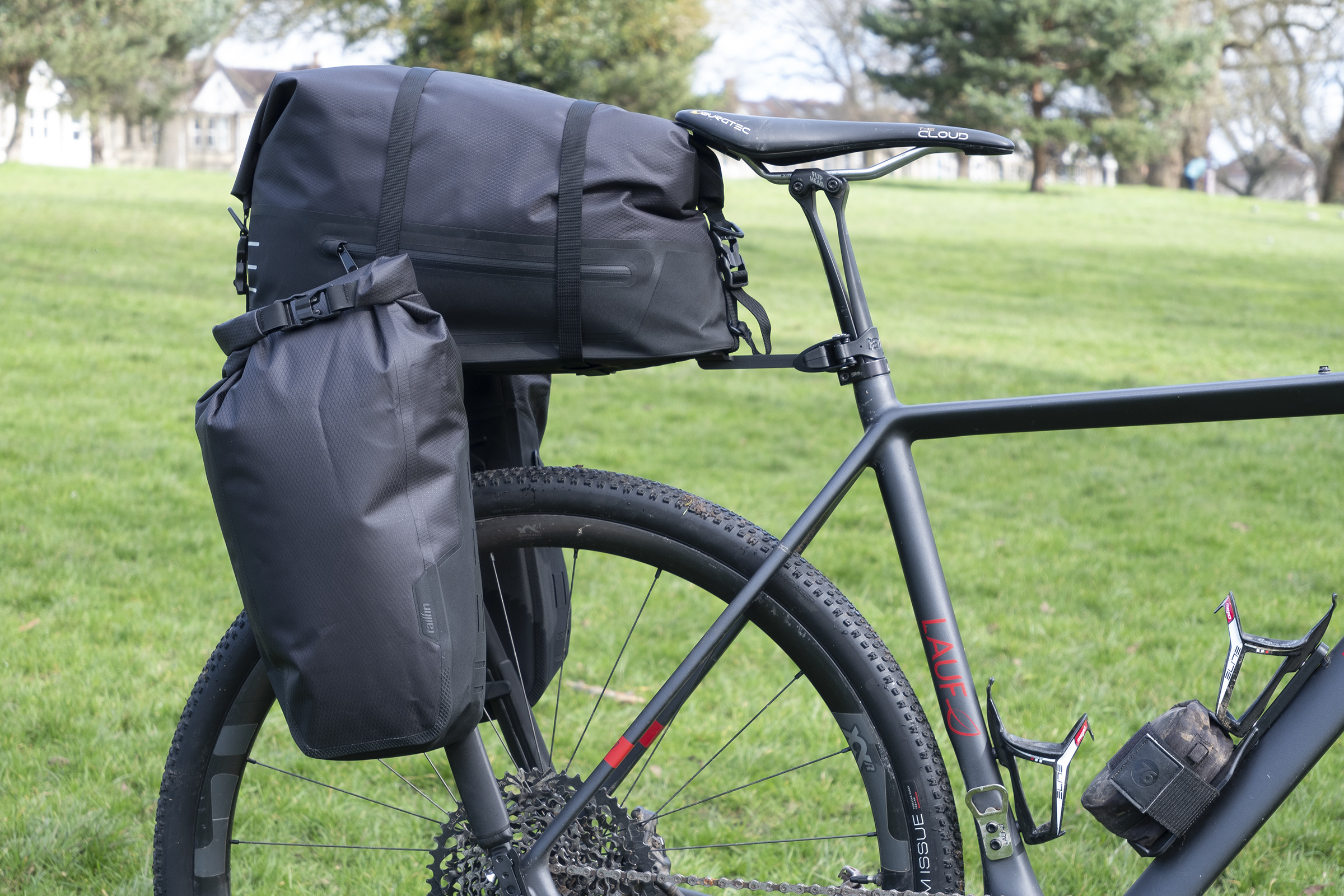
However, some pannier racks don’t need these eyelets and strap onto the seatstays or seatpost.
Panniers vs bikepacking bags
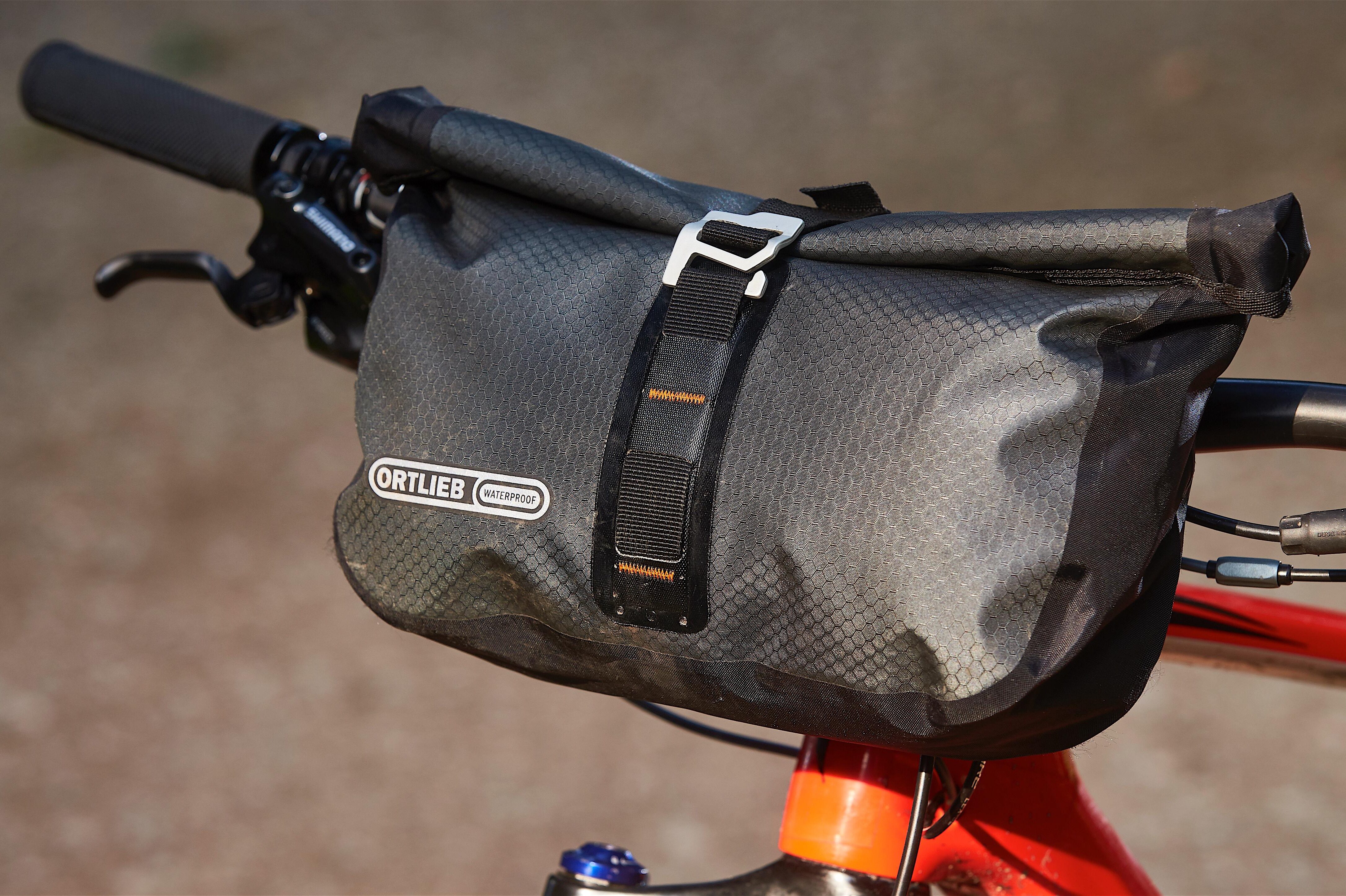
Bikepacking is an increasingly popular activity and, when compared to traditional cycle touring, typically sees riders carry their kit and equipment in bikepacking bags strapped to the bike, rather than in pannier bags on a rack.
Bikepacking bags are favoured due to their lower weight, the fact they can be fitted to almost any bike and because they are less obstructive on technical terrain.
However, pannier racks and bags remain relevant – and popular – because they can often carry awkward objects bikepacking bags cannot. Trendy frame bags aren’t cut out for carrying a laptop, for example.
While the best bikepacking bags will combine capacity and stability, pannier bags attached to a rack often have more room to carry your gear, with everything fixed securely to your bike.
Are bike panniers safe?

From a stability perspective, bicycle pannier bags take a little getting used to. But they shouldn’t sway like bikepacking saddle bags are prone to doing.
Nevertheless, don’t expect cornering to feel like you’re on an agile road bike, so take things easy to begin with.
It’s fine to ride with a single, light pannier, but when transporting more weight, evenly distribute it from one side to the other.
Besides waterproofing, hardier panniers feature tear-resistant fabrics and in-built padding. However, these are unlikely to defend delicate contents against obstacles, such as tree roots and rocks. Bear this in mind if your adventure takes you off-road.
Although you can lock some bicycle pannier bags to your bike, it’s better to remove them, leaving the rack attached, when you park your bike.
How should you pack pannier bags?

The heaviest stuff needs to go at the bottom of your front packs to keep a low centre of gravity.
Spreading weight over the front wheel also improves stability and handling, and will help the lifespan of your back wheel.
On a tour, stuff you need every day, such as a camera and stove, should go at the top of the front packs. Roll, rather than fold, clothes to save space.
You should also stow things you may need in a hurry at the top of your bag – such as a waterproof jacket and puncture repair kit.
Be organised: split things up according to function and label what’s in each bag. For example, put food and cooking gear in one bag and bike tools and spares in another.
It's also a good idea to leave some space to collect things along the way.
To protect expensive commuting items, such as laptops and tablets, consider putting them in a padded case or wrapping them in a layer of bubble wrap.